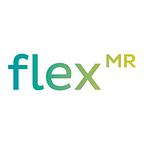With today’s technology, we are empowered to live a much more open life; as researchers, we are not only available to conduct market research in a more rapid and comfortable way, but we are also able to hear the voice of the customer each and every step of the way. This is incredibly convenient for both researchers and customers, especially when customers are interacting with a brand or not having a particularly good experience along the customer engagement journey.
Real-time Market Research
When talking about Real-Time Market Research we are referring the process of asking for participants’ feedback as they are going through the experience. To use this, we need to measure social media analytics that will collate the necessary data, which can then be used to draw out the necessary insights needed to improve the customers’ experience. This can then be followed by other research methods to enhance the insights gained through deeper analysis of new or existing data.
There are many advantages to the use of real-time, but for me, the most important are:
- Being able to identify a specific moment of weakness in the brand: with traditional methodologies you often find participants that are dissatisfied with the brand overall but they cannot give you a specific reason; using real-time market research, researchers are able to identify what is happening and in which step of the customer journey, which leads us straight to the second advantage.
- Detailed feedback: because everything is so fresh in the consumers’ mind researchers are able to gain so many details on the purchase-experience; this is unlike other methodologies where time has passed and so the likelihood of information retention has decreased. They are likely to forget a few things that might seem meaningless to them, but are very important to us!
- Everyone is tweeting! The communicative barriers between brands and consumers have been broken down with the increased usage of social media, meaning communication is now easier than ever before! The main advantage to this is that consumers feel closer to the brands actively using social media. Another advantage to this is that brands are able to help each other. They can share with other companies the improvements that go right or innovation attempts that go wrong, and gives us so many responses/examples which we can later translate in statistics for other research purposes.
Agile Market Research
When we talk about agile market research, simply put we are talking about traditional research taken into the modern internet-fuelled era. Everything is online and so should research be via communities, surveys, focus groups, forums, polls, sampling… you name it, the research method is online and part of agile market research! The online aspect of current market research adds the flexibility to have one tool, or as many tools as needed and being able to combine them to suit the researcher’s unique requirements. All of this has to be fast, affordable, and effective.
Unlike real-time, agile research gives researchers the opportunity to gain more depth during the feedback about a consumer experience; this means participants can put down their thoughts about what happened on their customer journey, or compare their experience to something similar with another brand.
For me, the most important advantage in agile research is that consumers are able to respond to any research task (except focus groups) when they have a chance to do it; the tasks is not required to be completed at a certain time but they can do it when they are free to give all the details and truly think about their responses. This is a major advantage as, in my experience, many responses are often given during the night.
Another advantage to agile research is that it also gives you the opportunity to combine different tools at the same time, improving the consumer experience and offering a shorter process of response. And let’s not forget that if you build your own community you are able to access and put together your own custom sampling any time you need it. This is much quicker than looking for an external partner which can delay the progression of the research project for a few days.
Conclusion
Real-time research and agile research are two different ways of listening to consumers. They have to be analysed differently and they take place at different times of the purchasing/experience process. However, this does not mean that you have to choose between one or the other, on the contrary, it would be best to combine both of them to have a better understanding of the consumers’ point of view and possible ways to improve your business.
The original version of this article appeared on the FlexMR Insight Blog and can be accessed here.
